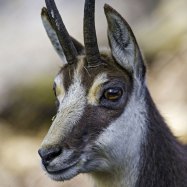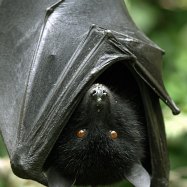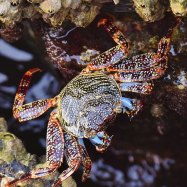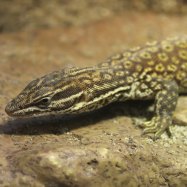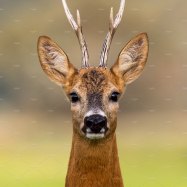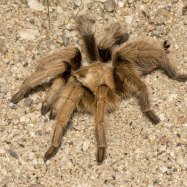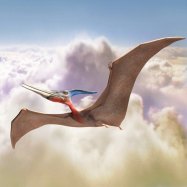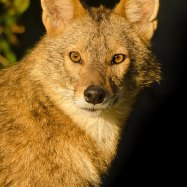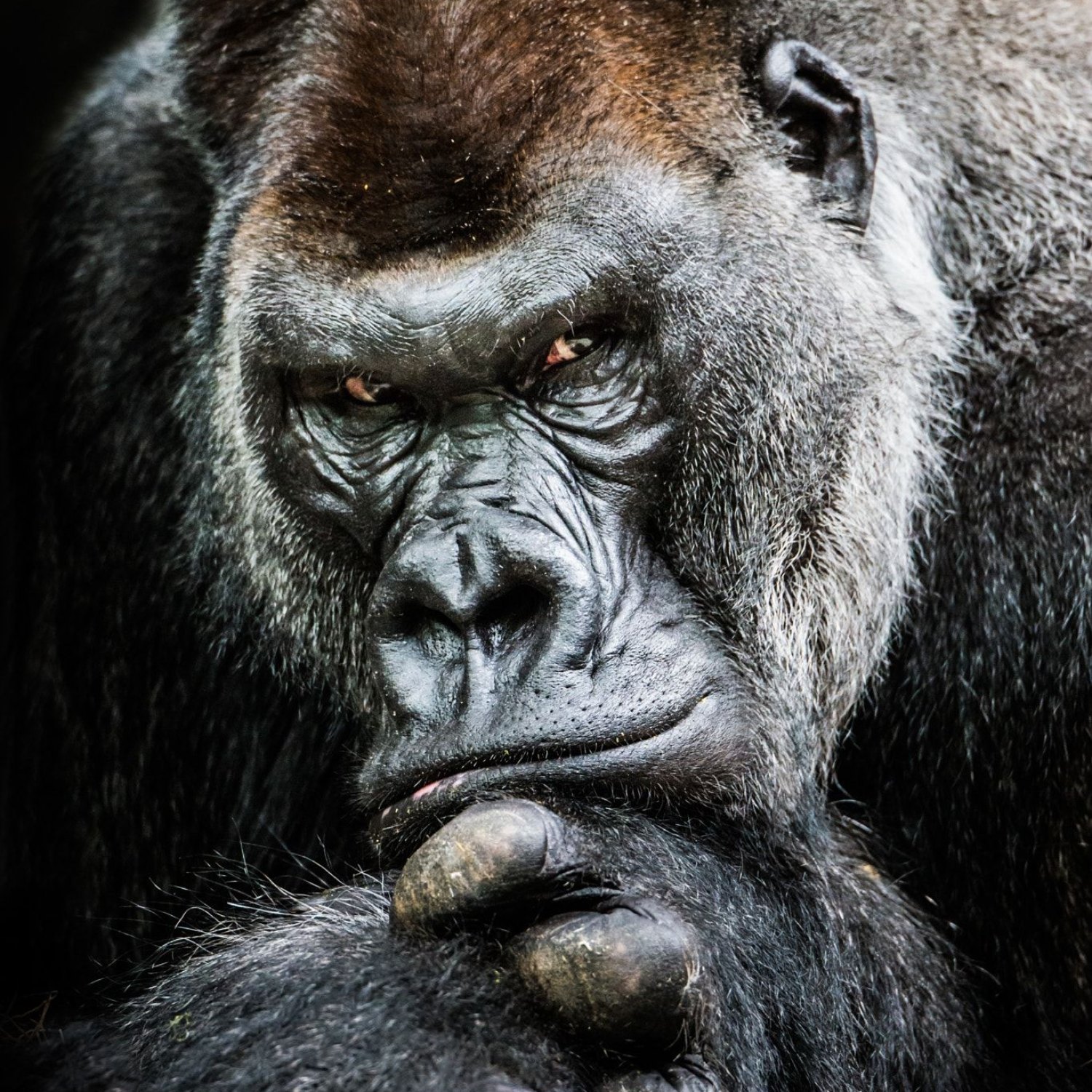
Western Gorilla
1.4 to 1.8 meters
The Western Gorilla, found in Central Africa, is the largest of all great apes. With an average length of 1.4 to 1.8 meters, this stocky and muscular animal is part of the Hominidae family. Despite their large size, Western Gorillas are known for their gentle nature and strong family bonds. Learn more about these fascinating animals and their habitat on your next trip to Central Africa.
Animal Details Summary:
Common Name: Western Gorilla
Kingdom: Animalia
Habitat: Rainforests
The Gentle Giants of Central Africa: Exploring the World of Western Gorillas
The rainforests of central Africa are home to some of the most fascinating and diverse creatures in the world. Among them, the Western Gorilla (Gorilla gorilla) stands out as a gentle giant, captivating the hearts of humans and researchers alike. With their powerful yet peaceful demeanor, these magnificent animals have become a symbol of strength and conservation. Let's take a closer look at the amazing features and characteristics of this incredible species Western Gorilla.Classifying Western Gorillas
Western Gorillas belong to the kingdom Animalia, phylum Chordata, and class Mammalia, placing them in the same category as humans. Their order, Primates, is known for its advanced intelligence and ability to adapt to various environments. Within the family Hominidae, Western Gorillas are closely related to chimpanzees, bonobos, and other gorilla species.Habitat and Distribution
Western Gorillas can be found in the lush, dense rainforests of Equatorial Africa, specifically in countries such as Cameroon, Republic of Congo, Equatorial Guinea, Gabon, and Angola. They are also present in some parts of Nigeria, Gabon, and the Central African Republic. Their natural habitats are characterized by high rainfall and temperatures, making them suitable for the growth of the gorilla's main food source - fruits.Feeding Habits
Like other gorilla species, Western Gorillas are herbivores, meaning they feed on plants and fruits. They are known to have a diverse diet, consuming over 200 different types of plants, including leaves, stems, fruits, and flowers. Their feeding habits play a crucial role in maintaining the biodiversity of their habitats, as they spread seeds during their travels and contribute to the growth of new vegetation Wood Frog.Physical Features
Western Gorillas have stocky, muscular bodies, with an average length of 1.4 to 1.8 meters. They are covered in black or dark grey hair, which helps them blend in with their surroundings. This coloration also acts as a natural sunscreen, protecting their skin from the harsh UV rays of the sun. However, this unique coloration is not only for protection but also for communication among the gorillas.Social Structure
Western Gorillas live in cohesive social groups called troops, made up of a dominant male, several adult females, and their offspring. The dominant male, also known as a silverback due to the silver hair on its back, is responsible for protecting the troop and leading them to feeding grounds. These troops can have up to 30 individuals, making them one of the largest primate societies.Threats and Conservation Efforts
Despite their robust social structure and physical strength, Western Gorillas face numerous threats in the wild. The most significant danger comes from humans, with habitat destruction and poaching being the top causes of their decline in numbers. The illegal trade of bushmeat, which offers a delicacy to some communities, has also contributed to the loss of thousands of gorillas each year. However, organizations such as the World Wildlife Fund and International Union for Conservation of Nature have been working tirelessly to preserve these magnificent creatures. Through education, habitat protection, and community involvement, they hope to create a sustainable future for Western Gorillas and other endangered animals.Unique Characteristics
Besides their immense strength and intelligence, Western Gorillas possess some unique characteristics that make them stand out among other animals. For instance, they share 98% of their DNA with humans, making them one of our closest relatives in the animal kingdom. They are also capable of using tools, such as using sticks to extract termites from mounds. Additionally, Western Gorillas have the ability to laugh, a trait that was once only believed to be a human feature.Conclusion
In conclusion, Western Gorillas are truly remarkable animals, both in terms of their physical features and their complex social structures. As we continue to learn more about these gentle giants, it becomes clear that they are more similar to us than we could have ever imagined. We must do everything in our power to protect these magnificent creatures and their natural habitats to ensure that future generations can also experience the wonder and beauty of Western Gorillas.

Western Gorilla
Animal Details Western Gorilla - Scientific Name: Gorilla gorilla
- Category: Animals W
- Scientific Name: Gorilla gorilla
- Common Name: Western Gorilla
- Kingdom: Animalia
- Phylum: Chordata
- Class: Mammalia
- Order: Primates
- Family: Hominidae
- Habitat: Rainforests
- Feeding Method: Herbivore
- Geographical Distribution: Equatorial Africa
- Country of Origin: Cameroon, Republic of Congo, Equatorial Guinea, Gabon, Angola
- Location: Central Africa
- Animal Coloration: Black or dark grey
- Body Shape: Stocky and muscular
- Length: 1.4 to 1.8 meters
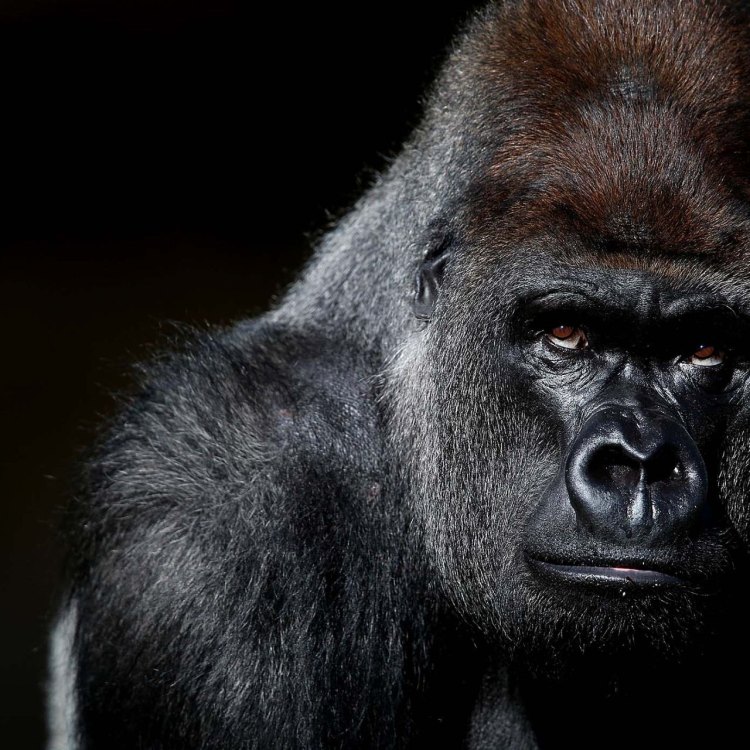
Western Gorilla
- Adult Size: Males: 1.4 to 1.8 meters, Females: 1 to 1.5 meters
- Average Lifespan: 35 to 40 years
- Reproduction: Sexual
- Reproductive Behavior: Polygynous
- Sound or Call: Loud hooting, barking, and grunting
- Migration Pattern: Not migratory
- Social Groups: Troops
- Behavior: Ground-dwelling and arboreal
- Threats: Habitat loss, poaching, and disease
- Conservation Status: Critically Endangered
- Impact on Ecosystem: Key seed dispersers
- Human Use: Tourism and research
- Distinctive Features: Silver-gray hair on adult males
- Interesting Facts: Western Gorillas are the largest primates and have the closest DNA similarity to humans among non-human primates.
- Predator: Humans (poaching)
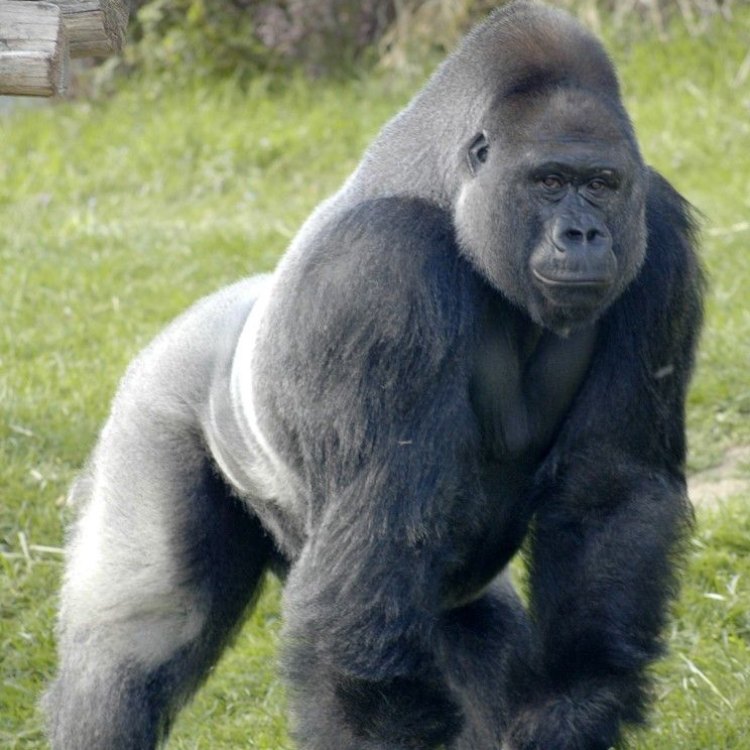
Gorilla gorilla
The Majestic Western Gorilla: Uncovering the Fascinating Life of Africa's Largest Primate
Deep within the lush green forests of central and western Africa, roams a creature that is both powerful and gentle, fierce and vulnerable – the Western Gorilla. These magnificent creatures are the largest primates in the world, and among the rarest. With their distinctive silver-gray hair on adult males, they are truly a sight to behold. But while they may seem like a distant mystery to many, Western Gorillas play a vital role in their ecosystem and have a fascinating life that is worth uncovering PeaceOfAnimals.Com. So, let's delve into the world of these incredible beings and discover what makes them so unique.Adult Size and Lifespan:
On average, male Western Gorillas can reach a height of 1.4 to 1.8 meters, while females are typically smaller, measuring 1 to 1.5 meters. Despite their massive size, they are mostly gentle and docile creatures, with a weight ranging from 135 to 180 kilograms. Known for their great strength and agility, they are a force to reckon with in the animal kingdom.
In the wild, Western Gorillas can live for 35 to 40 years, which is relatively long for a non-human primate. However, in captivity, they can live even longer, with some individuals reaching their 50s Weasel. Unfortunately, due to various threats that will be discussed later in this article, not many Western Gorillas reach old age.
Reproduction and Behavior:
Like most primates, Western Gorillas reproduce sexually. However, their reproductive behavior is quite different from many other primates. They are polygynous, which means one male will mate with multiple females within their social group. This behavior can be seen among both lowland and mountain gorillas, the two subspecies of Western Gorillas.
Western Gorillas are known for their loud calls, which can be heard from miles away. They communicate through a series of hooting, barking, and grunting sounds. These calls play a significant role in social interactions and are also used as a warning signal to potential predators.
Social Groups and Migration Pattern:
Western Gorillas are social animals and live in groups called troops, which consist of a dominant silverback male, several females, and their offspring. These troops can vary in size, with some consisting of only a few individuals and others having up to 30 members.
Unlike other animals that migrate to seek resources, Western Gorillas do not have a specific migration pattern. They have a relatively small and stable home range, and they remain in their territory all year round.
Threats and Conservation Status:
Despite their powerful appearance and massive size, Western Gorillas face numerous threats that have resulted in their critically endangered status. Habitat loss is one of the most significant threats they face. As human populations continue to grow, their natural habitat is being destroyed to create space for agriculture, mining, and human settlements. This has led to fragmentation and loss of vital food sources for the gorillas.
Poaching is another major threat to Western Gorillas. Their meat, also known as "bushmeat," is considered a delicacy in many parts of Africa, and their body parts are used for traditional medicine and adornments. The illegal wildlife trade is a lucrative business, and many gorillas have been brutally killed to cater to this demand.
Disease outbreaks have also taken a toll on Western Gorilla populations. Due to their close genetic similarity to humans, they are susceptible to many human diseases. In recent years, outbreaks like Ebola have decimated gorilla populations, as they have no natural immunity to these diseases.
Key Seed Dispersers and Human Use:
Despite the immense threats they face, Western Gorillas play a crucial role in their ecosystem. They are considered key seed dispersers, as they play a vital role in maintaining the balance of their environment. As they move through the forests, they eat fruits and other vegetation, digesting the seeds and spreading them across the forest floor, helping to regenerate new plants.
Human use of Western Gorillas is mostly limited to tourism and research. In some African countries, gorilla trekking has become a popular activity, with tourists paying hefty fees to observe these incredible animals in their natural habitat. This has helped to support conservation efforts and raise awareness about the critically endangered status of Western Gorillas. Imposing strict regulations on tourism activities can help ensure that these activities do not harm the gorillas or their habitat.
Distinctive Features and Interesting Facts:
One of the most distinctive features of Western Gorillas is the silver-gray hair that covers the backs of adult males, giving them a majestic appearance. This hair is not gray like human hair due to aging, but rather a naturally lighter color that appears as they mature. It gives them a unique and distinguished appearance and makes them stand out from other gorilla subspecies.
Apart from their distinctive appearance, Western Gorillas also have a fascinating connection to humans. They have the closest DNA similarity to humans among non-human primates, with a genetic similarity of over 98%. This makes them a valuable species for scientific research, as they can provide insights into evolutionary and biological processes that can help us better understand ourselves.
Predator:
Sadly, the most significant predator of Western Gorillas is humans. Habitat loss, poaching, and disease outbreaks are all caused by human actions, and they pose a significant threat to the survival of these gentle giants. However, humans also have the power to protect and conserve Western Gorillas, and it is our responsibility to ensure their survival for future generations.
In conclusion, Western Gorillas are truly magnificent creatures that are worth protecting. They are the largest primates, with a fascinating life that is still shrouded in many mysteries. From their unique appearance to their essential role in their ecosystem, they deserve our attention and conservation efforts. As we continue to strive for a more sustainable world, let us not forget the Western Gorillas and their critical importance in maintaining the balance of nature.
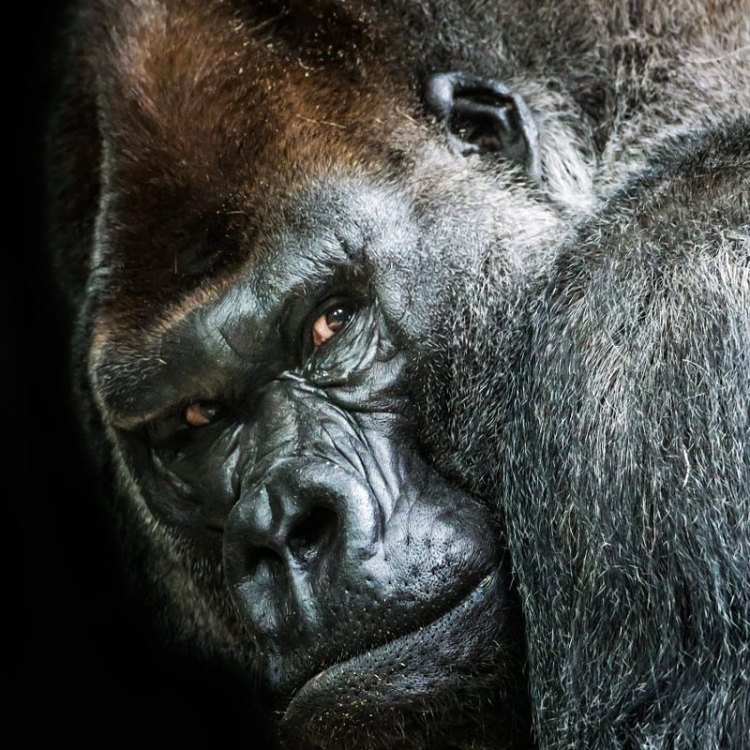
The Gentle Giants of Central Africa: Exploring the World of Western Gorillas
Disclaimer: The content provided is for informational purposes only. We cannot guarantee the accuracy of the information on this page 100%. All information provided here may change without prior notice.

